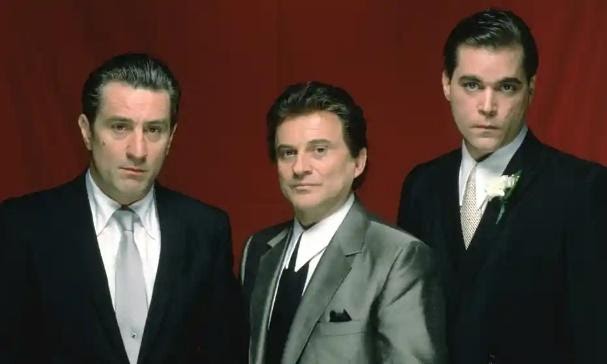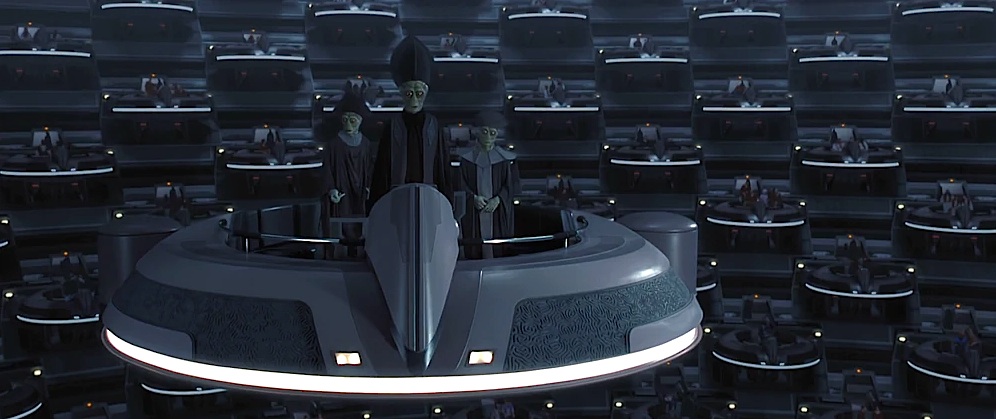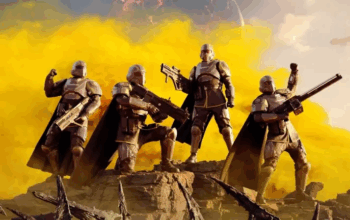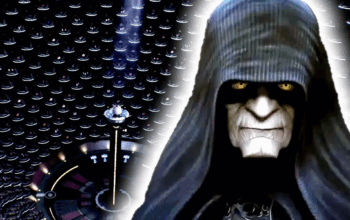Ever since Star Wars III: Revenge of the Sith was released in 2005, one scene has stuck out from all the rest. Palpatine telling an old Sith legend, a legend that motivated Anakin to move to the Dark side: “The Tragedy of Darth Plagueis the Wise”. The Story of a Sith Lord who achieved immortality with the power to create and preserve life only to be killed in his sleep by his apprentice. What Palpatine never told Anakin was that he was that very apprentice.
In 2012 Lucasbooks released what many fans believed to be one of the greatest of the Star Wars novels: Darth Plagueis. Written by James Luceno, this book follows the story of the titular Sith lord from assuming his role of master (by killing his own) to taking on a young Palpatine – soon to be Darth Sidious – as his apprentice, to his eventual murder following the events of The Phantom Menace. More importantly, it served as a catalyst for the events of the first film and the prequel era – from the Naboo crisis to the creation of the clone army that would ultimately execute Palpatine’s purge of the Jedi – but it was Plagueis that masterminded the whole operation from the shadows, providing the foundation for the Jedi Council’s downfall as the Republic transformed into the Empire.
It is one of the most acclaimed novels in the “Legends” universe. Unfortunately Darth Plagueis was released in January 2012, ~9 months before the Disney purchase of the Star Wars IP, and is currently in a bit of a Schrodinger-esque state we’d like to resolve. Because it was released before Disney’s acquisition it became part of Lucasfilm’s sweeping de-canonization of the Legends formerly called the Expanded Universe. Despite the novels precarious state in canon, subsequent material post acquisition still references previous elements from the Legends lore. As such there are elements in the novelization that are still partially recognized in Disney’s new universe. Furthermore there is currently no new story arcs that actively conflicts with this tale.
This series of articles will discuss how the Darth Plagueis novel can be adapted for a screen release in the Disney-verse – which actors are right for the part, and what its structure/format should be.
With production of new Star Wars feature films in limbo at the moment, there is a new opportunity for Lucasfilm to re-explore previously thrown out material. Instead of blatantly ignoring Star Wars literature for their own half-baked “originals” they should adapt these novels into the official Disney canon.
Part 1 – Themes and Format
Unlike more recent Star Wars material that loosely borrow elements of the old expanded universe, this project will be a straight-up adaptation of James Luceno’s work. This will be a very different kind of Star Wars story compared to what came before. Whereas films define themselves with giant space battles and lightsaber fights, our telling of Darth Plagueis will instead be directed more like a political thriller.
The Focus
This may be a risky proposition for a Star Wars project, as the prequels have been heavily criticized for putting too much focus on politics. However, other projects have made similar choices and yet found great success. Game of Thrones for example features predominantly scenes of dialogue and strategy (until the last season, but we don’t talk about that), but through complex characters and great writing they created an enduring TV show that people talked about for years.
What the Darth Plagueis novel has done successfully is expand on the Star Wars galaxy, specifically on how the Galactic Republic worked and how corporations and big money influence its policy making, just like many democracies today.
“What Makes a Sith?”
Sporadic action and lightsabers are featured in the story, sure, but that’s not what the tale of Darth Plagueis is about. The focus is on these two dark side beings discussing “What makes a Sith?”.
Unlike his apprentice, Plagueis never regarded himself as “evil”. He believed that the force is not so much an “ally” or guiding entity, as a Jedi preach, but rather a tool for the user to bend to their will. He also defies conventional Jedi philosophy about how a Jedi would believe that people aren’t tricked by the dark side, but rather that it’s just in their nature.
“Their attempts to convince themselves that they were seduced by the dark side, or that the Dark side compelled their actions are nothing more than pitiful rationalizations, that is why the Sith embrace the dark from the start.”
– Darth Plagueis / Hego Demask
The Medium
What must be addressed next is the medium and overall length for our proposed screenplay.
As a novel that’s almost 500 pages long, there is already too much material to cover over the course of a singular movie. So, for our Darth Plagueis adaptation this will need to be delivered over the course of an episodic miniseries.
It is important to stress that a lot of these episodes will have dialogue-heavy political themes throughout. Despite the valid criticisms received for applying this approach to a film, this works in shows that completely commit to one vision. In a film, trade talks, pod racing, and lore trivia cannot be delivered at the cost of story and pacing like it did in the prequels. However, this can work as a standalone story that is separate from the Skywalker saga.
Playing the Villain
One last crucial detail that must be discussed before going further is that this adaptation needs to pull no punches when it comes to the portrayal of Sidious. This has been a problem in recent villain-centric media like Maleficent or Venom, where they try way too hard to find some way to portray actually evil characters as heroes. This work needs to go all-in to show that Palpatine is bad in all his deeds.


Regardless of the tragic circumstances that created a monster like Sidious, they cannot be made as though this makes Sheev Palpatine appear to be redeemable. Many popular characters that have done horrific acts, such as Magneto, Ragnar Lodbroke, and the born-again Harley Quinn make themselves very clear that their actions are their own, regardless of ethics. Sidious may have done evil acts for his master’s bidding, but he did so without question or remorse, even against innocent people. Palpatine doesn’t need to have a character-breaking redemption arc to make us root for the bad guy. The Clone Wars cartoon, for example, had its best story arcs with a resurrected Darth Maul as a protagonist.
Villains are often fascinating characters – to the point where we find them more engaging than the heroes. No one wanted to dress up as Luke Skywalker, they wanted to dress up as Vader or Boba Fett.
Editor’s Note: I dressed up as Luke… But I dressed up as Vader for much longer >:}
– Dirk Hortensius, Darth Editor
The emperor himself is still enjoyable because of his Iconic voice and his seemingly perverse love of power. The prequels have given a new angle to Sidious beyond the cloaked figure that can be explored further.



Such a choice to have Sidious as your main character may turn off some viewers, but to quote Leonardo DiCaprio in regards to his character in Wolf of Wall Street:
“If you are authentic with the character and don’t betray that, people would go along with anything”
– Oscar Award-Winning Actor, Leonardo DiCaprio
People love to follow Sidious’ story even if it’s a villain’s origin story, because that’s what makes The Emperor the most interesting character in the entire Star Wars saga.
To be continued in Part 2: The Dreamcast







2 thoughts on “Darth Plagueis: The Miniseries”
Comments are closed.